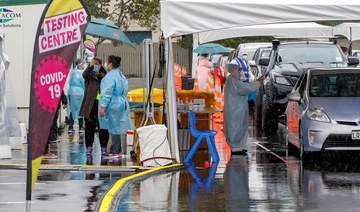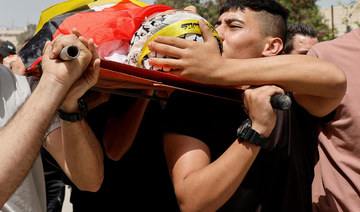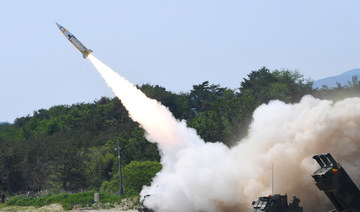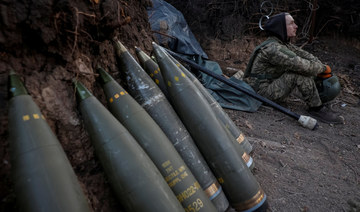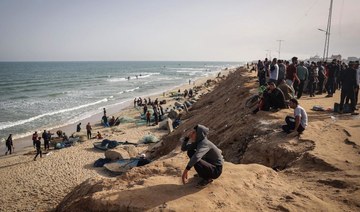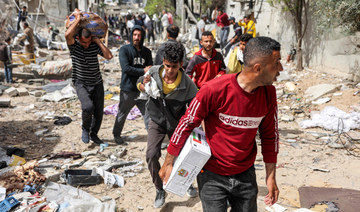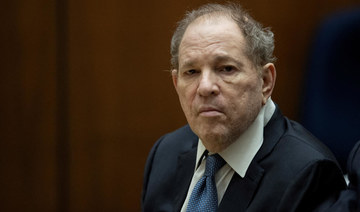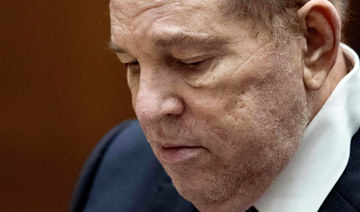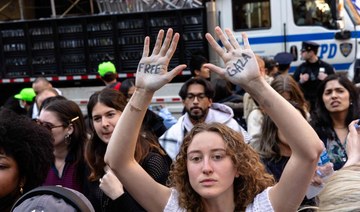WELLINGTON, New Zealand: New Zealand’s government acknowledged Monday what most other countries did long ago: It can no longer completely get rid of the coronavirus.
Prime Minister Jacinda Ardern announced a cautious plan to ease lockdown restrictions in Auckland, despite an outbreak there that continues to simmer.
Since early in the pandemic, New Zealand had pursued an unusual zero-tolerance approach to the virus through strict lockdowns and aggressive contact tracing.
Until recently, that elimination strategy had worked remarkably well for the country of 5 million, which has reported just 27 virus deaths.
While other nations faced rising death tolls and disrupted lives, New Zealanders went back to workplaces, school yards and sports stadiums safe from any community spread.
But that all changed when the more contagious delta variant somehow escaped from a quarantine facility in August after it was brought into the country from a traveler returning from Australia.
Despite New Zealand going into the strictest form of lockdown after just a single local case was detected, it ultimately wasn’t enough to crush the outbreak entirely.
One factor may have been that the disease spread among some groups that are typically more wary of authorities, including gang members and homeless people living in transitional housing.
The outbreak has grown to more than 1,300 cases, with 29 more detected on Monday. A few cases have been found outside of Auckland.
Ardern said that seven weeks of lockdown restrictions in Auckland had helped keep the outbreak under control.
“For this outbreak, it’s clear that long periods of heavy restrictions has not got us to zero cases,” Ardern said. “But that is OK. Elimination was important because we didn’t have vaccines. Now we do, so we can begin to change the way we do things.”
New Zealand began its vaccination campaign slowly compared to most other developed nations. Rates rocketed in August after the outbreak began but have dropped off significantly again since then.
About 65 percent of New Zealanders have had at least one dose and 40 percent are fully vaccinated. Among people age 12 and older, about 79 percent have had at least a single jab.
Under Ardern’s plan that starts Tuesday, Aucklanders will be able to meet outdoors with loved ones from one other household, early childhood centers will reopen and people will be able to go to the beach.
The dates for a phased reopening of retail stores and later bars and restaurants have yet to be decided.
Ardern said the elimination strategy had served the country incredibly well but the government always intended to eventually transition to the protection of vaccines, a change hastened by the delta variant “game changer.”
The government’s elimination approach had been broadly supported by New Zealanders but was facing increasing criticism. Over the weekend, hundreds of people turned out to rallies protesting the lockdown.
Opposition lawmaker Chris Bishop said the government had no clear strategy to deal with the outbreak other than total surrender.
But Ardern said that most measures would remain in place to keep the outbreak under control, including exhaustive contact tracing and isolating those who got infected.
“There’s good cause for us to feel optimistic about the future,” Ardern said. “But we cannot rush.”
New Zealand admits it can no longer get rid of coronavirus
https://arab.news/wv2ne
New Zealand admits it can no longer get rid of coronavirus
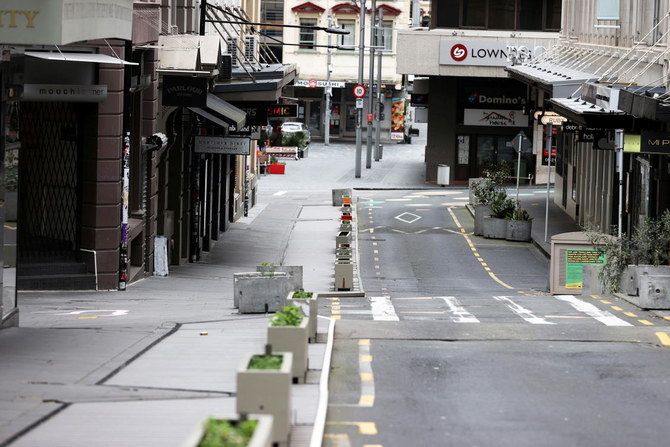
- New Zealand began its vaccination campaign slowly compared to most other developed nations
France threatens new sanctions against West Bank settlers
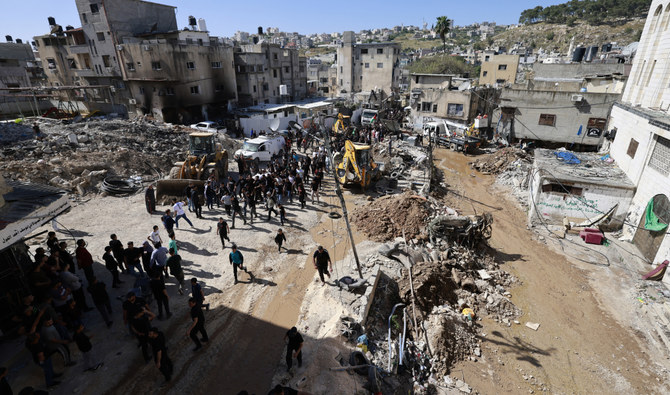
- In February, 28 ‘extremist Israeli settlers’ were banned from entering French territory
- At least 488 Palestinians have been killed by Israeli troops or settlers in the West Bank since October 7, according to Palestinian officials
PARIS: France is considering extending sanctions on Israeli settlers behind violence against Palestinian civilians in the occupied West Bank, President Emmanuel Macron’s office said he spoke with Jordan’s King Abdullah II.
The two leaders “firmly condemned recent Israeli announcements about settlements” in the West Bank, “which are contrary to international law,” Macron’s office said in a statement.
Tensions have mounted in the occupied territories since the Hamas October 7 attack on Israel that set off the Gaza war. At least 488 Palestinians have been killed by Israeli troops or settlers in the West Bank since October 7, according to Palestinian officials.
In February, 28 “extremist Israeli settlers” were banned from entering French territory. Last week the European Union imposed sanctions on four Israeli settlers and two settler organizations for violence against Palestinians in the West Bank and Jerusalem.
Since the start of the year, Israeli authorities have declared nearly 1,100 hectares (2,720 acres) of the West Bank to be “state land” — twice as much as in the previous record year in 1999, according to the settlement watchdog Peace Now.
The status gives the government full control over how the land is used, inevitably leading it to being declared off-limits to Palestinians.
Some 490,000 Israeli settlers now live in the West Bank alongside three million Palestinians.
Macron and King Abdullah also spoke about the “catastrophic humanitarian situation in Gaza” and expressed “great concern about the perspective of an Israeli offensive on Rafah, where more than 1.5 million people are seeking refuge, and reiterated their opposition to such an operation,” the statement said.
“The two also insisted on the necessity of an immediate and durable ceasefire to allow massive deliveries of urgent aid and the protection of civilian populations,” it added.
Macron also “repeated that the liberation of hostages held by Hamas was an absolute priority for France.”
Ukraine pulls US-provided Abrams tanks from the front lines over Russian drone threats
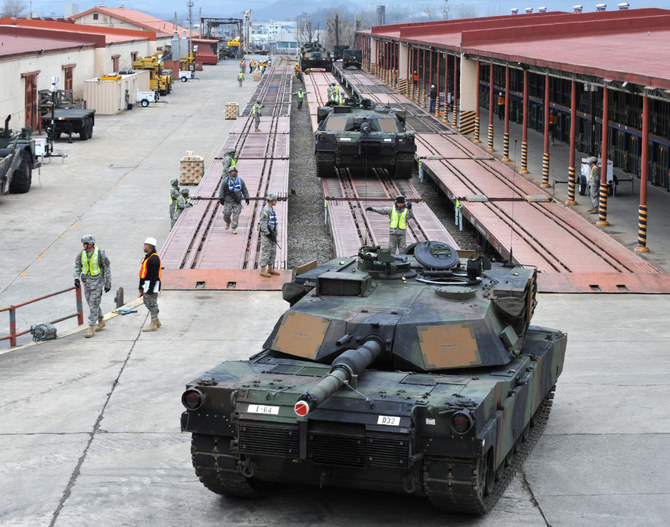
- Five of the 31 tanks the US sent to Ukraine in January 2023 have already been lost to Russian drone attacks
- US officials said they will work with the Ukrainians to reset tactics to make the tanks more effective
WASHINGTON: Ukraine has sidelined US-provided Abrams M1A1 battle tanks for now in its fight against Russia, in part because Russian drone warfare has made it too difficult for them to operate without detection or coming under attack, two US military officials told The Associated Press.
The US agreed to send 31 Abrams to Ukraine in January 2023 after an aggressive monthslong campaign by Kyiv arguing that the tanks, which cost about $10 million apiece, were vital to its ability to breach Russian lines.
But the battlefield has changed substantially since then, notably by the ubiquitous use of Russian surveillance drones and hunter-killer drones. Those weapons have made it more difficult for Ukraine to protect the tanks when they are quickly detected and hunted by Russian drones or rounds.
Five of the 31 tanks have already been lost to Russian attacks.
The proliferation of drones on the Ukrainian battlefield means “there isn’t open ground that you can just drive across without fear of detection,” a senior defense official told reporters Thursday.
The official spoke on the condition of anonymity to provide an update on US weapons support for Ukraine before Friday’s Ukraine Defense Contact Group meeting.
For now, the tanks have been moved from the front lines, and the US will work with the Ukrainians to reset tactics, said Joint Chiefs of Staff Vice Chairman Adm. Christopher Grady and a third defense official who confirmed the move on the condition of anonymity.
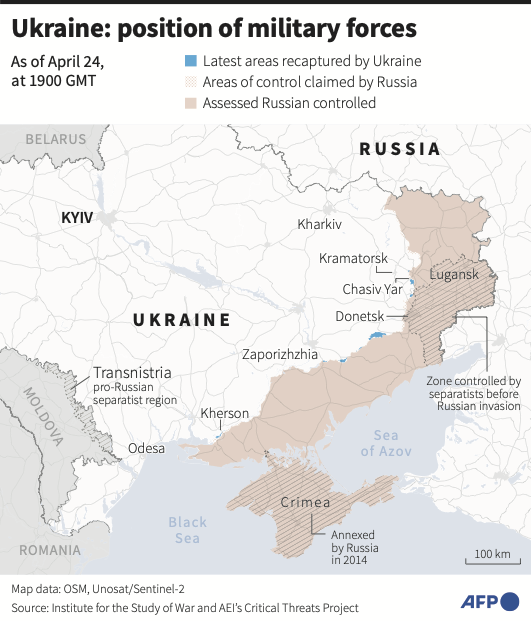
“When you think about the way the fight has evolved, massed armor in an environment where unmanned aerial systems are ubiquitous can be at risk,” Grady told the AP in an interview this week, adding that tanks are still important.
“Now, there is a way to do it,” he said. “We’ll work with our Ukrainian partners, and other partners on the ground, to help them think through how they might use that, in that kind of changed environment now, where everything is seen immediately.”
News of the sidelined tanks comes as the US marks the two-year anniversary of the Ukraine Defense Contact Group, a coalition of about 50 countries that meets monthly to assess Ukraine’s battlefield needs and identify where to find needed ammunition, weapons or maintenance to keep Ukraine’s troops equipped.
Recent aid packages, including the $1 billion military assistance package signed by President Joe Biden on Wednesday, also reflect a wider reset for Ukrainian forces in the evolving fight.
The US is expected to announce Friday that it also will provide about $6 billion in long-term military aid to Ukraine, US officials said, adding that it will include much sought after munitions for Patriot air defense systems. The officials spoke on condition of anonymity to discuss details not yet made public.
The $1 billion package emphasized counter-drone capabilities, including .50-caliber rounds specifically modified to counter drone systems; additional air defenses and ammunition; and a host of alternative, and cheaper, vehicles, including Humvees, Bradley Infantry Fighting Vehicles and Mine Resistant Ambush Protected Vehicles.
The US also confirmed for the first time that it is providing long-range ballistic missiles known as ATACMs, which allow Ukraine to strike deep into Russian-occupied areas without having to advance and be further exposed to either drone detection or fortified Russian defenses.
While drones are a significant threat, the Ukrainians also have not adopted tactics that could have made the tanks more effective, one of the US defense officials said.
After announcing it would provide Ukraine the Abrams tanks in January 2023, the US began training Ukrainians at Grafenwoehr Army base in Germany that spring on how to maintain and operate them. They also taught the Ukrainians how to use them in combined arms warfare — where the tanks operate as part of a system of advancing armored forces, coordinating movements with overhead offensive fires, infantry troops and air assets.
As the spring progressed and Ukraine’s highly anticipated counteroffensive stalled, shifting from tank training in Germany to getting Abrams on the battlefield was seen as an imperative to breach fortified Russian lines. Ukrainian President Volodymyr Zelensky announced on his Telegram channel in September that the Abrams had arrived in Ukraine.
Since then, however, Ukraine has only employed them in a limited fashion and has not made combined arms warfare part of its operations, the defense official said.
During its recent withdrawal from Avdiivka, a city in eastern Ukraine that was the focus of intense fighting for months, several tanks were lost to Russian attacks, the official said.
A long delay by Congress in passing new funding for Ukraine meant its forces had to ration ammunition, and in some cases they were only able to shoot back once for every five or more times they were targeted by Russian forces.
In Avdiivka, Ukrainian forces were badly outgunned and fighting back against Russian glide bombs and hunter-killer drones with whatever ammunition they had left.
US starts building Gaza aid pier

- It is expected to be operational in early May
WASHINGTON: The US military has begun construction on a pier meant to boost deliveries of desperately needed aid to Gaza, the Pentagon said on Thursday.
The small coastal territory has been devastated by more than six months of Israeli bombardment and ground operations against Hamas militants, leaving the civilian population in need of humanitarian assistance to survive.
“I can confirm that US military vessels... have begun to construct the initial stages of the temporary pier and causeway at sea,” Pentagon spokesman Major General Pat Ryder told journalists.
Indications are that the pier will be operational in early May, and “everything is on course at this point,” he said.
Highlighting the dangers in Gaza, Ryder said that “some type of mortar attack” caused minimal damage near an onshore area that will eventually be a delivery site for aid.
The Israeli defense ministry body responsible for Palestinian civil affairs said militants fired mortars Wednesday at a humanitarian work site in northern Gaza during a visit by UN personnel, with no casualties reported.
A senior US military official told journalists that “we don’t assess that the attack had anything to do with the (aid pier) mission or delivery of humanitarian assistance from the sea.”
The military official also outlined how the maritime aid delivery process will work, saying assistance will first come into Cyprus, where it will be screened and prepared for delivery.
Aid will then be loaded onto commercial vessels for transportation to a floating platform miles off the coast of Gaza. There, it will be transferred to smaller vessels that will take the assistance to a pier that is anchored to the shore.
Trucks will then drive the aid down the platform, where a distribution partner will take it into Gaza, the official said, noting that initial operating capacity will be 90 trucks of assistance per day, later rising to 150 trucks a day.
The senior military official reiterated that there will be no US “boots on the ground,” saying an Israeli military unit will be responsible for anchoring the pier to the shore.
A senior US administration official said that the US Agency for International Development “will partner with UN organizations to deliver the life-saving aid once it gets to Gaza through the maritime corridor.”
The official painted a dire picture of the situation in Gaza and the urgent need for aid, saying “the entire population of Gaza — 2.2 million people — is facing acute food insecurity.”
“More than half of the population in northern Gaza is facing catastrophic levels of food insecurity,” while “in southern Gaza, nearly a quarter of the population is facing this kind of catastrophic food insecurity,” the official said.
Harvey Weinstein’s rape conviction is overturned by New York’s top court
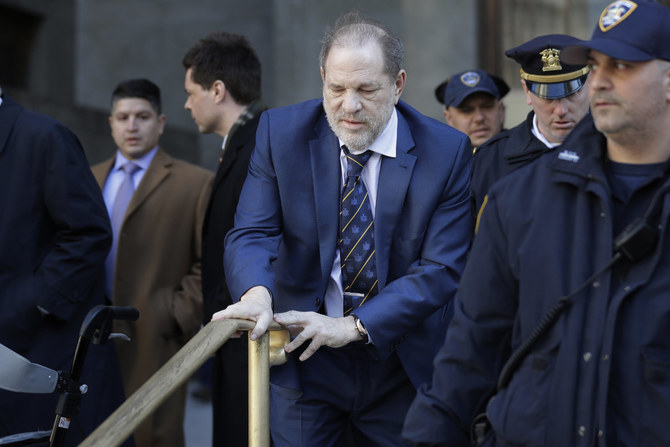
- The court found the trial judge unfairly allowed testimony against Weinstein based on allegations that weren’t part of the case
- The 72-year-old ex-movie mogul, however, will remain in prison because he was convicted in Los Angeles in 2022 of another rape
NEW YORK: New York’s highest court on Thursday threw out Harvey Weinstein ‘s 2020 rape conviction with a ruling that shocked and disappointed women who celebrated historic gains during the #MeToo era and left those who testified in the case bracing for a retrial against the ex-movie mogul.
The court found the trial judge unfairly allowed testimony against Weinstein based on allegations that weren’t part of the case.
Weinstein, 72, will remain in prison because he was convicted in Los Angeles in 2022 of another rape. But the New York ruling reopens a painful chapter in America’s reckoning with sexual misconduct by powerful figures — an era that began in 2017 with a flood of allegations against Weinstein.
#MeToo advocates noted that Thursday’s ruling was based on legal technicalities and not an exoneration of Weinstein’s behavior, saying the original trial irrevocably moved the cultural needle on attitudes about sexual assault.
The Manhattan district attorney’s office said it intends to retry Weinstein, and at least one of his accusers said through her lawyer that she would testify again.
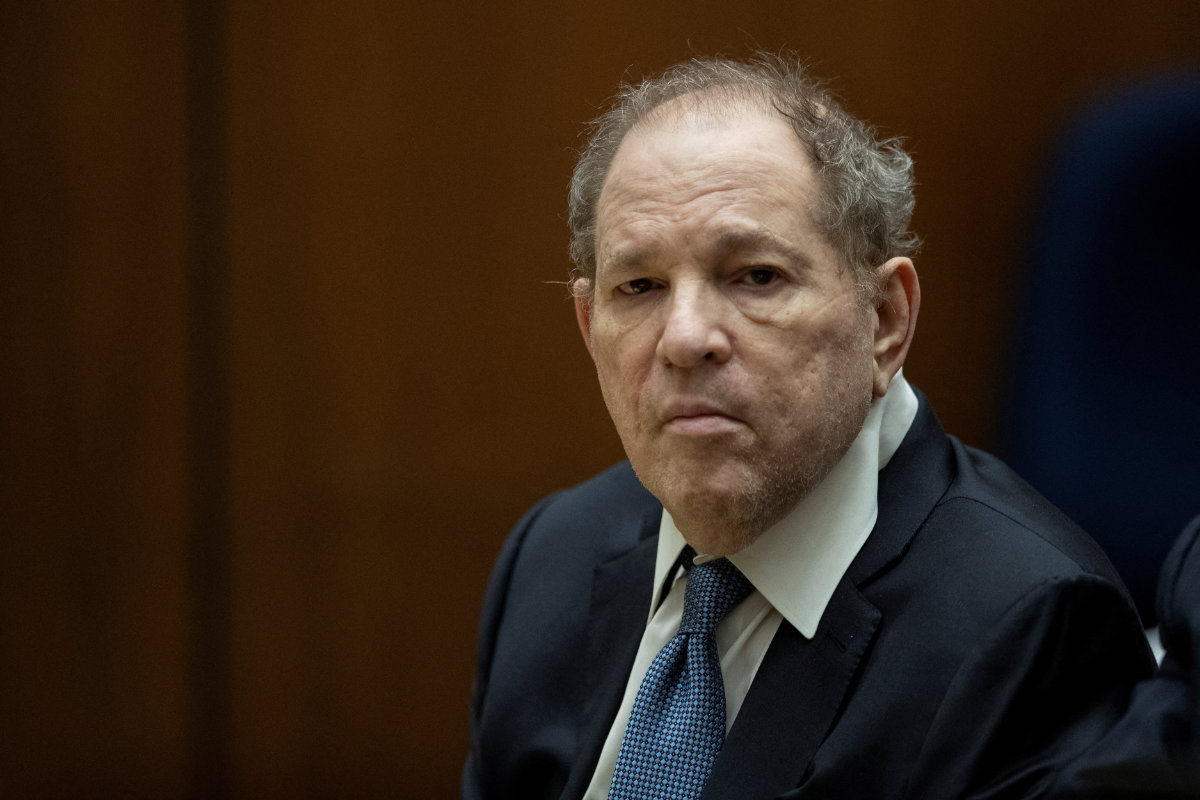
The state Court of Appeals overturned Weinstein’s 23-year sentence in a 4-3 decision, saying “the trial court erroneously admitted testimony of uncharged, alleged prior sexual acts” and permitted questions about Weinstein’s “bad behavior” if he had testified. It called this “highly prejudicial” and “an abuse of judicial discretion.”
In a stinging dissent, Judge Madeline Singas wrote that the Court of Appeals was continuing a “disturbing trend of overturning juries’ guilty verdicts in cases involving sexual violence.” She said the ruling came at “the expense and safety of women.”
In another dissent, Judge Anthony Cannataro wrote that the decision was “endangering decades of progress in this incredibly complex and nuanced area of law” regarding sex crimes after centuries of “deeply patriarchal and misogynistic legal tradition.”
The reversal of Weinstein’s conviction is the second major #MeToo setback in the last two years. The US Supreme Court refused to hear an appeal of a Pennsylvania court decision to throw out Bill Cosby’s sexual assault conviction.
Weinstein has been in a New York prison since his conviction for forcibly performing oral sex on a TV and film production assistant in 2006, and rape in the third degree for an attack on an aspiring actor in 2013. He was acquitted on the most serious charges — two counts of predatory sexual assault and first-degree rape.
He was sentenced to 16 years in prison in the Los Angeles case.
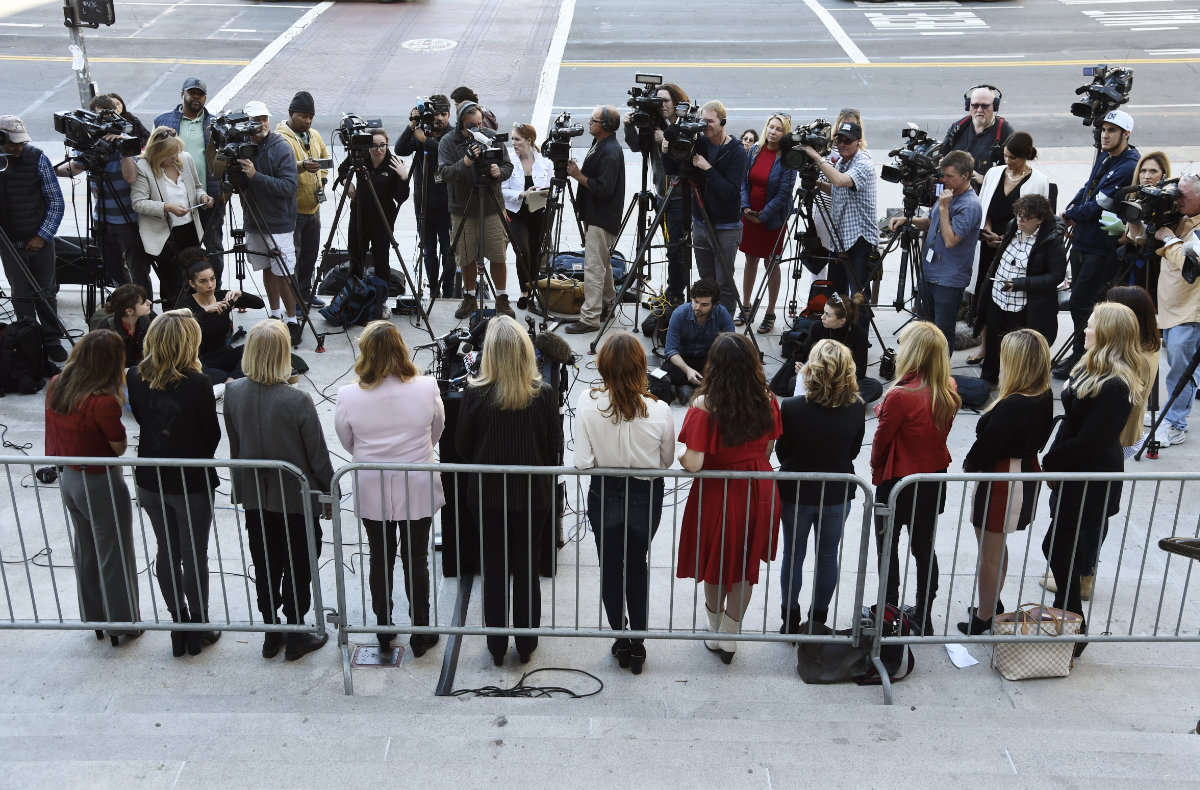
Weinstein’s lawyers expect Thursday’s ruling to have a major impact on the appeal of his Los Angeles rape conviction. Their arguments are due May 20.
Jennifer Bonjean, a Weinstein attorney, said the California prosecution also relied on evidence of uncharged conduct alleged against him.
“A jury was told in California that he was convicted in another state for rape,” Bonjean said. “Turns out he shouldn’t have been convicted and it wasn’t a fair conviction. … It interfered with his presumption of innocence in a significant way in California.”
Weinstein lawyer Arthur Aidala called the Court of Appeals ruling “a tremendous victory for every criminal defendant in the state of New York.”
Attorney Douglas H. Wigdor, who has represented eight Harvey Weinstein accusers including two witnesses at the New York criminal trial, called it “a major step back” and contrary to routine rulings by judges allowing evidence of uncharged acts to help jurors understand the intent or patterns of a defendant’s criminal behavior.
Debra Katz, a prominent civil rights and #MeToo attorney who represented several Weinstein accusers, said her clients are “feeling gutted” by the ruling, but she believes — and is telling them — that their testimony had changed the world.
“People continue to come forward, people continue to support other victims who’ve reported sexual assault and violence, and I truly believe there’s no going back from that,” Katz said. She predicted Weinstein will be convicted at a retrial and said accusers like her client Dawn Dunning feel great comfort knowing he will remain behind bars.
Dunning, a former actor who was a supporting witness at the New York trial, said in remarks to The Associated Press conveyed through Katz that she was “shocked” by the ruling and dealing with a range of emotions, including asking herself, “Was it all for naught?”
“It took two years of my life,” Dunning said. “I had to live through it every day. But would I do it again? Yes.”
She said that in confronting Weinstein, she faced her worst fear and realized he had no power over her.
Weinstein’s conviction in 2020 was heralded by activists and advocates as a milestone achievement, but dissected just as quickly by his lawyers and, later, the Court of Appeals when it heard arguments on the matter in February.
Allegations against Weinstein, the once powerful and feared studio boss behind such Oscar winners as “Pulp Fiction” and “Shakespeare in Love,” ushered in the #MeToo movement.
Dozens of women came forward to accuse Weinstein, including stars such as Ashley Judd and Uma Thurman. His New York trial drew intense publicity, with protesters chanting “rapist” outside the courthouse.
“This is what it’s like to be a woman in America, living with male entitlement to our bodies,” Judd said Thursday.
Weinstein, incarcerated at the Mohawk Correctional Facility, about 100 miles (160 kilometers) northwest of Albany, maintains his innocence. He contends any sexual activity was consensual.
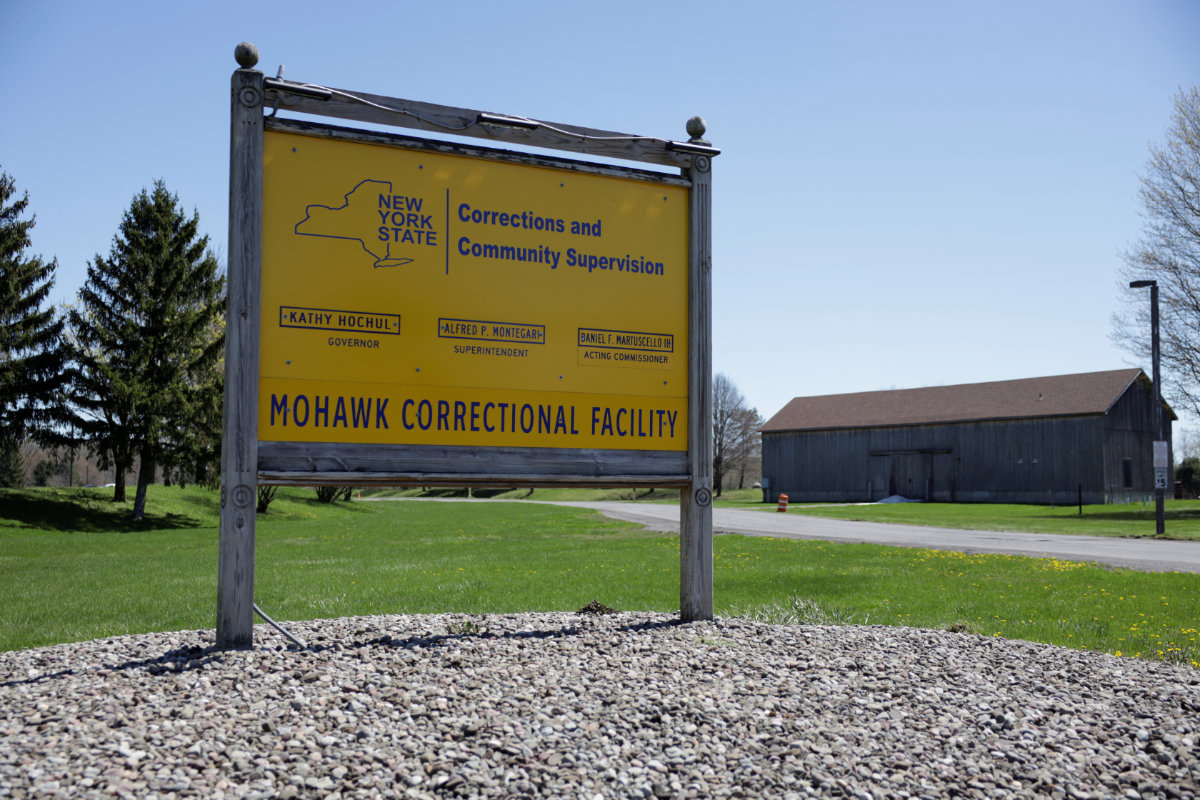
His lawyers argued on appeal that the trial overseen by Judge James Burke was unfair because testimony was allowed from three women whose claims of unwanted sexual encounters with Weinstein were not part of the charges. Burke’s term expired at the end of 2022, and he is no longer a judge.
They also appealed the judge’s ruling that prosecutors could confront Weinstein over his long history of brutish behavior, including allegations of punching his movie producer brother at a business meeting, snapping at waiters, hiding a woman’s clothes and threatening to cut off a colleague’s genitals with gardening shears.
As a result, Weinstein, who wanted to testify, did not take the stand, Aidala said.
The appeals court labeled the allegations “appalling, shameful, repulsive conduct” but warned that “destroying a defendant’s character under the guise of prosecutorial need” did not justify some trial evidence and testimony.
In a majority opinion written by Judge Jenny Rivera, the Court of Appeals said defendants have a right to be held accountable “only for the crime charged and, thus, allegations of prior bad acts may not be admitted against them for the sole purpose of establishing their propensity for criminality.”
The Court of Appeals agreed last year to take Weinstein’s case after an intermediate appeals court upheld his conviction. Prior to their ruling, judges on the lower appellate court at oral arguments had raised doubts about Burke’s conduct. One observed that Burke let prosecutors pile on with “incredibly prejudicial testimony” from additional witnesses.
At a news conference, Aidala predicted that the lasting effect of the reversal would be that more defendants will testify at their trials, including Weinstein, who “will be able to tell his side of the story.”
He said that when he spoke to Weinstein on Thursday, his client told him: “I’ve been here for years in prison for something I didn’t do. You got to fix this.”
Wave of pro-Palestinian campus protests in US meets forceful response
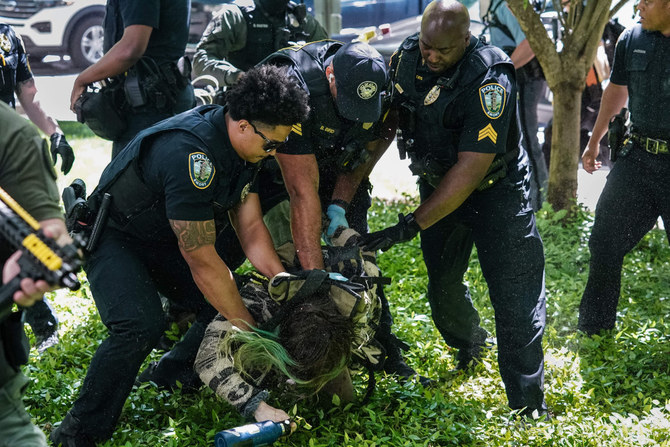
- Students protesters tasered and teargassed in Atlanta and "swept away" in Austin, Texas
- More than 530 arrests have been made in the last week across major US universities in relation to protests over Gaza
NEW YORK: Fresh clashes between police and students opposed to Israel’s war in Gaza broke out on Thursday, raising questions about forceful methods being used to shut down protests that have intensified since mass arrests at Columbia University last week.
Over the past two days, law enforcement at the behest of college administrators have deployed Tasers and tear gas against students protesters at Atlanta’s Emory University, activists say, while officers clad in riot gear and mounted on horseback have swept away demonstrations at the University of Texas in Austin.
At Columbia, the epicenter of the US protest movement, university officials are locked in a stalemate with students over the removal of a tent encampment set up two weeks ago as a protest against the Israeli offensive.
The administration, which has already allowed an initial deadline for an agreement with students to lapse, has given protesters until Friday to strike a deal.
Other universities appear determined to prevent similar, long-running demonstrations to take root, opting to work with police to shut them down quickly and in some cases, with force.
Overall, more than 530 arrests have been made in the last week across major US universities in relation to protests over Gaza, according to a Reuters tally. University authorities have said the demonstrations are often unauthorized and called on police to clear them.
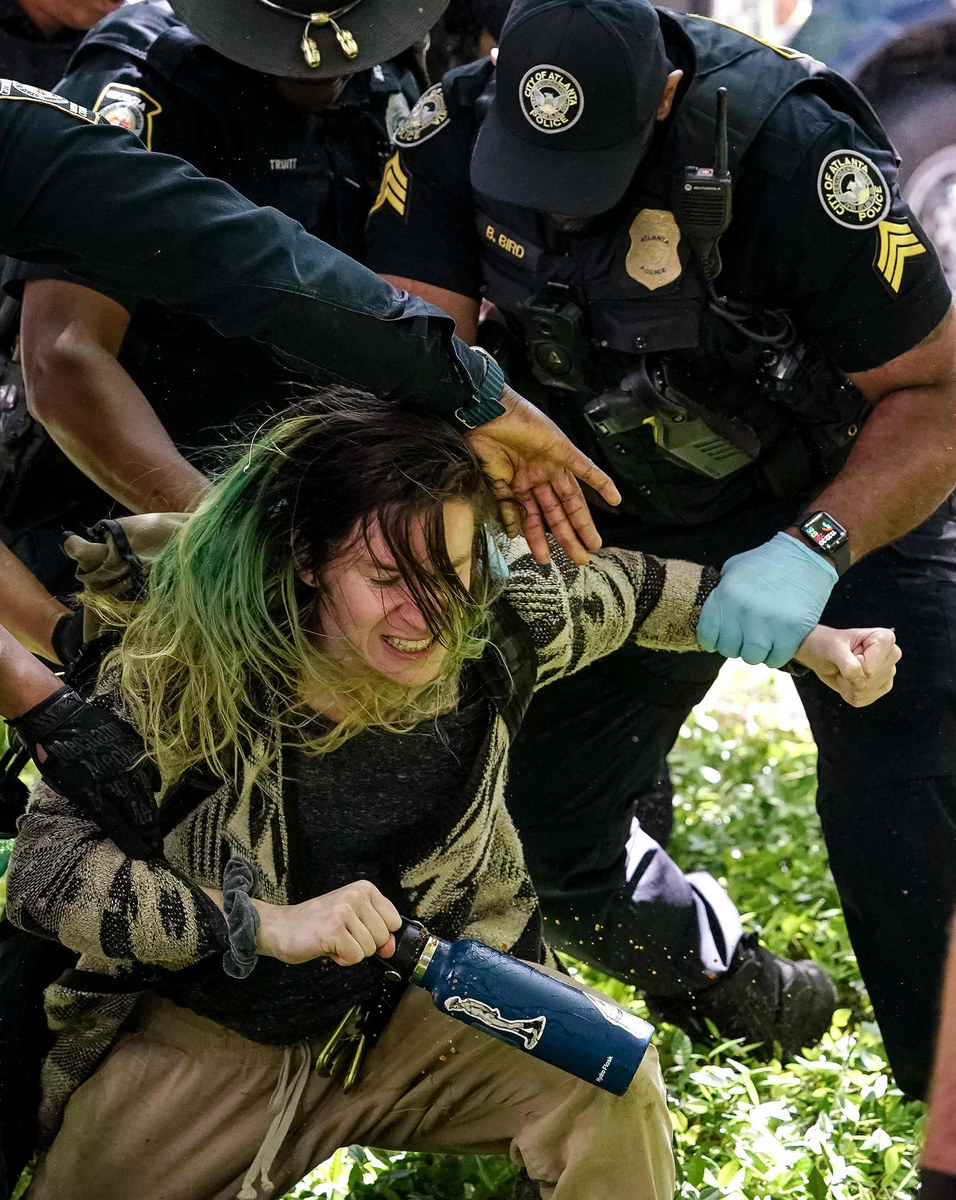
At Emory, police detained at least 15 people on its Atlanta campus, according to local media, after protesters began erecting a tent encampment in an attempt to emulate a symbol of vigilance employed by protesters at Columbia and elsewhere.
The local chapter of the activist group Jewish Voice for Peace said officers used tear gas and Tasers to dispense the demonstration and take some protesters into custody.
Video footage aired on FOX 5 Atlanta showed a melee breaking out between officers and some protesters, with officers using what appeared to be a stun gun to subdue a person and others wrestling other protesters to the ground and leading them away.
“Several dozen protesters trespassed into Emory University’s campus early Thursday morning and set up tents,” the school wrote in response to an emailed request for comment. It described the protesters as “activists attempting to disrupt our university,” but did not comment directly on the reports of violence.
Atlanta police did not immediately respond to inquiries about the number of protesters who were detained or about reports over the use of tear gas and stun guns.
Similar scenarios unfolded on the New Jersey campus of Princeton University where officers swarmed a newly-formed encampment, video footage on social media showed.
Boston police earlier forcibly removed a pro-Palestinian encampment set up by Emerson College, arresting more than 100 people, media accounts and police said. The latest clashes came a day after police in riot gear and on horseback descended on hundreds of student protesters at the University of Texas at Austin and arrested dozens of them.
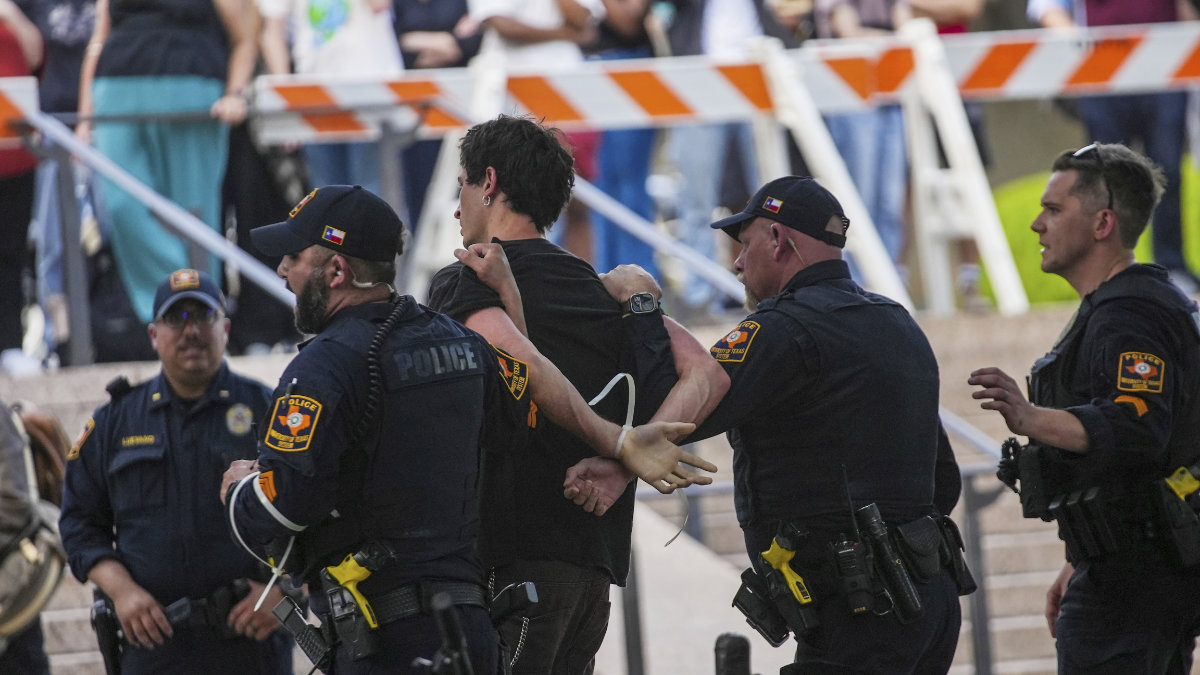
But prosecutors on Thursday dropped charges against most of the 60 people taken into custody, mostly on misdemeanor charges of criminal trespassing and disorderly conduct, and said they would proceed with only 14 of those cases.
In dropping the charges, the Travis County district attorney cited “deficiencies in the probable cause affidavits.”
‘Alarming reports’
Human Rights Watch and the American Civil Liberties Union have condemned the arrest of protesters and urged authorities to respect their free speech rights.
But some Republicans in Congress have accused university administrators of allowing Jewish students to be harassed, putting increasing pressure on schools to tightly control any demonstrations and to block any semi-permanent encampment.
US Education Secretary Miguel Cardona on Thursday said his department was closely monitoring the protests, including what he called “very alarming reports of antisemitism.”
In response, activist groups have strongly denied that the protests are antisemitic. Their aim is to pressure universities from divesting from companies that contribute to the Israeli military actions in Gaza, they say.
Even so, protest leaders have acknowledged that hateful rhetoric has been directed at Jewish students, but insist that people who tried to infiltrate and malign their movement are responsible for any harassment.

Friday deadline at Columbia
At Columbia, officials have given protesters until 4 a.m. on Friday to reach an agreement with the university on dismantling dozens of tents set up on the New York City campus in a protest that started a week ago.
An initial deadline of midnight Tuesday came and went without an agreement, but administrators extended it for 48 hours, citing progress in the talks.
The university already tried to shut the protest down by force. On April 18, Columbia President Minouche Shafik took the unusual move of asking police to enter the campus, drawing the ire of many rights groups, students and faculty.
More than 100 people were arrested and the tents were removed from the main lawn. But within a few days, the encampment was back in place, and the university’s options appeared to narrow.
Protesters have vowed to keep the protests going until their universities agree to disclose and divest any financial holdings that might support the war in Gaza, and grant amnesty to students suspended from school during the demonstrations.
Student protesters have also demanded that the US government rein in Israeli strikes on civilians in Gaza, which have killed more than 34,000 people, according to Palestinian health authorities. Israel is retaliating against an Oct. 7 Hamas attack that killed 1,200 people and led to 253 taken hostage, according to Israeli tallies.




